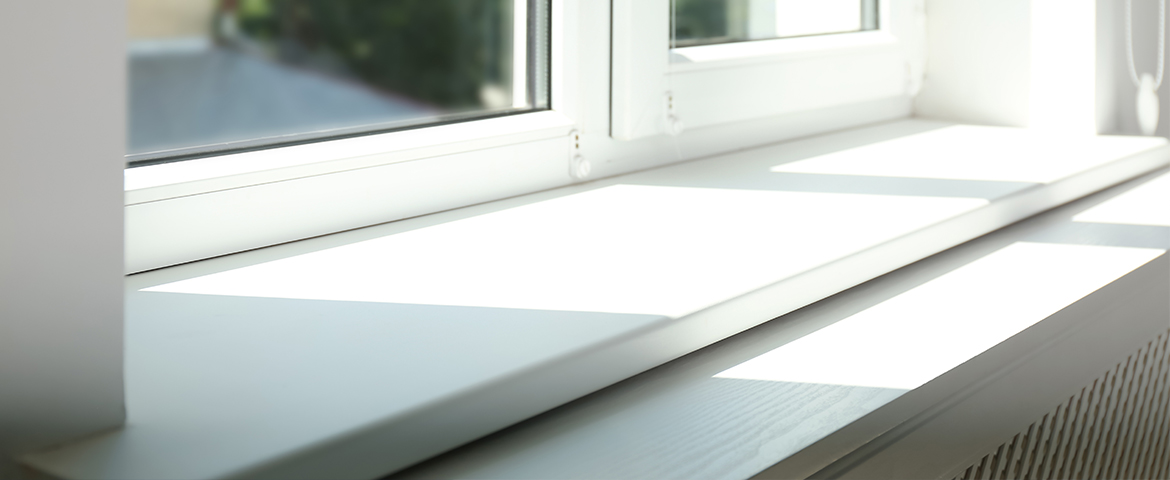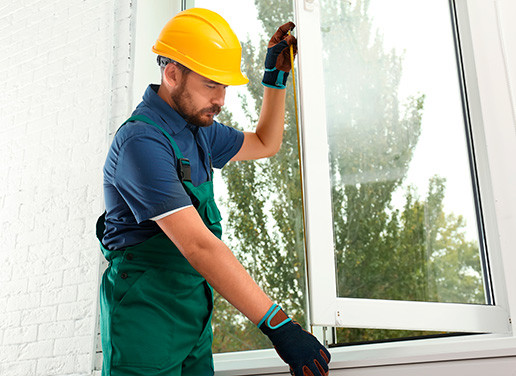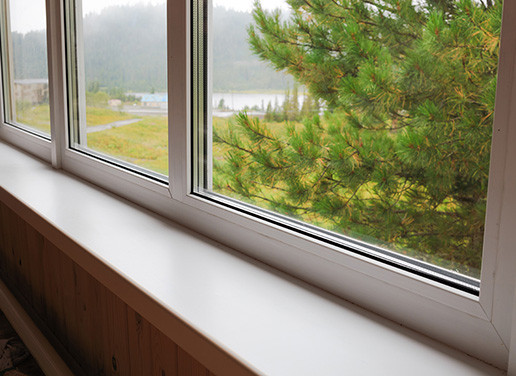Which window sill is better: glossy or matte

The question of whether to choose a glossy or matte window sill for installation in a room often arises. Both glossy and matte models are available on the market — and besides them there are also window sills with intermediate texture options. The differences between them are significant: such window sills look different in the interior, and accumulate pollution in different ways. Therefore, when choosing, you need to take into account not only the appearance of the structure, but also the conditions under which the plastic window sill will be operated, and whether you will be able to provide regular surface care.
What a window sill can be: the type of textures
If you chose a plastic window sill for installation indoors, its texture may be:
- Matte. The rough surface of the plastic coating is typical for matte models. The matte texture differs from one manufacturer to another, but the lack of gloss and textured PVC surface will be common for such plastic window sills.
- Glossy. In contrast to the matte window sill, the glossy one is perfectly smooth with a characteristic shine. The simplest glossy models are made monochrome, but there are also window sills with a different decor, which is protected by a glossy front coating.
Pros and cons of glossy window sills
Glossy window sills are installed where priorities are shifted towards the appearance of the structure:
- The main advantage of the glossy surface is a smooth texture that provides shine and reflection of the sun rays falling at an angle. Such a window sill looks attractive both in white and in color.
- The more intense and heterogeneous the lighting, the more interesting such a window sill looks. A smooth surface can become almost mirrored, which will make the design of the room more modern.
- There are advantages from a practical point of view. It is easy to take care of the smooth surface of such a window sill. The lack of texture causes the dust on the surface to linger, and organic impurities do not penetrate into the thickness of the material. Therefore, most of the stains are removed with one or two movements of a wet cloth or sponge.
On the other hand, gloss has its drawbacks:
- On the glossy coating, dirt is visible, because a couple of days after the general cleaning, the window sill does not look so beautiful. Gloss requires attention, and it is necessary to allocate time regularly to keep the structure clean.
- Care must be taken during cleaning. Glossy window sills do not like strong friction and the use of aggressive cleaning agents. In the first case, scratches may remain on the surfaces, in the second — matte spots that cannot be eliminated by returning the characteristic shine to the window sill. Of course, it will be possible to use the window sill, but the plastic window sill will lose most of its pristine beauty.
- Finally, don't forget that a smooth plastic surface is slippery. Therefore, it will be much easier to accidentally swipe a book, a vase or a small flower pot from the windowsill than from a matte coating.

Pros and cons of frosted window sills
The mentioned types of window sills complement each other, because everything that we said in the previous section can be repeated here — but "with the opposite sign":
- The advantage of a frosted window sill is practicality. Dirt is not so much visible on the matte surface, and therefore less time will be spent on care.
- The matte coating is not so slippery, therefore it is more convenient to use such a window sill as a shelf or a narrow countertop.
- The sun glare is not so visible on the rough plastic coating.
Pay attention! The degree of heating depends primarily not on the texture, but on the shade of the base. But still matte window sills under direct sunlight are heated less intensively.
The lack of gloss makes matte window sills a little less spectacular in comparison with glossy ones. But at the same time, a plain surface without excessive gloss can also look quite organic. In addition, matte designs look organically with matte lamination textures for windows. Therefore, such a window sill can be an excellent choice for a stylish modern interior.
The disadvantage is the tendency to accumulate pollution. If you do not clean the plastic surface of the windowsill for a long time, it will turn from white to gray. At the same time, it will be more difficult to wash it: dirt and dust linger in microscopic depressions, and therefore sometimes you have to spend time and effort to remove stains.
Optimal window sill texture: which one to choose for a house or apartment?
The only correct solution to the question put in the title of the article does not exist. We have described the pros and cons above, and here we will give a short summary:
- If you are pedantic enough to wipe off dust and dirt once every 1-2 days, choose a model with the smoothest possible decorative coating. In this case, the window sill simply will not have time to get dirty and will retain its characteristic shine for a long time.
- Do you need a practical and less demanding care option? Your choice is a frosted window sill. Of course, you should not "run" it, otherwise during general cleaning the stains will have to be wiped off longer than usual.
- Are you planning to put potted flowers near the window? Give up gloss in favor of a practical texture. Scratching a matte window sill is more difficult, and the traces from the pots will not be so noticeable.
In addition, when choosing a window sill, do not limit yourself to analyzing the available textures. It is important to take into account the whole complex of factors, starting from the size and ending with the shape of the capino. Only a properly selected window sill will fit seamlessly into the interior and will not require excessive attention during operation.
The WDS window sill line includes models in several shades with both matte and glossy textures. At the same time, matt WDS window sills with rounded kapinos are made using the most modern technologies, because their surface remains as smooth as possible. As a result, caring for them is as easy as for smooth models — dirt can be removed literally with one movement of a wet sponge.
You can order a window sill by following the link



